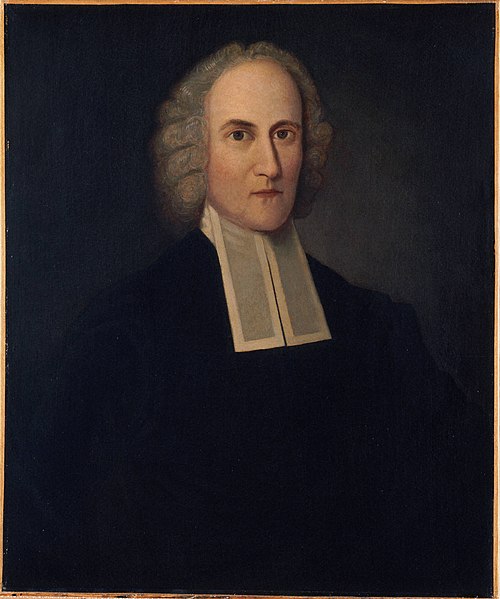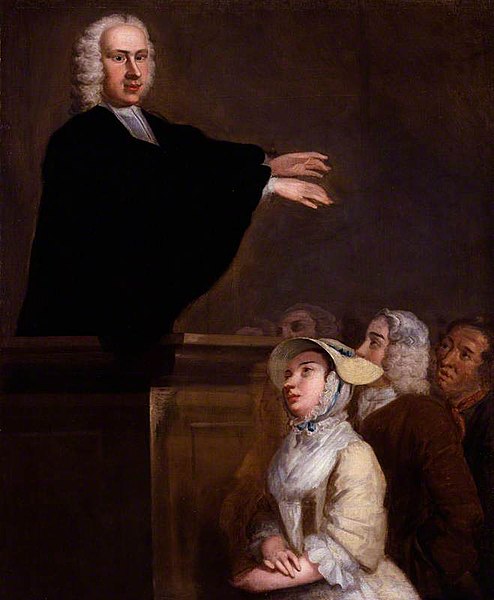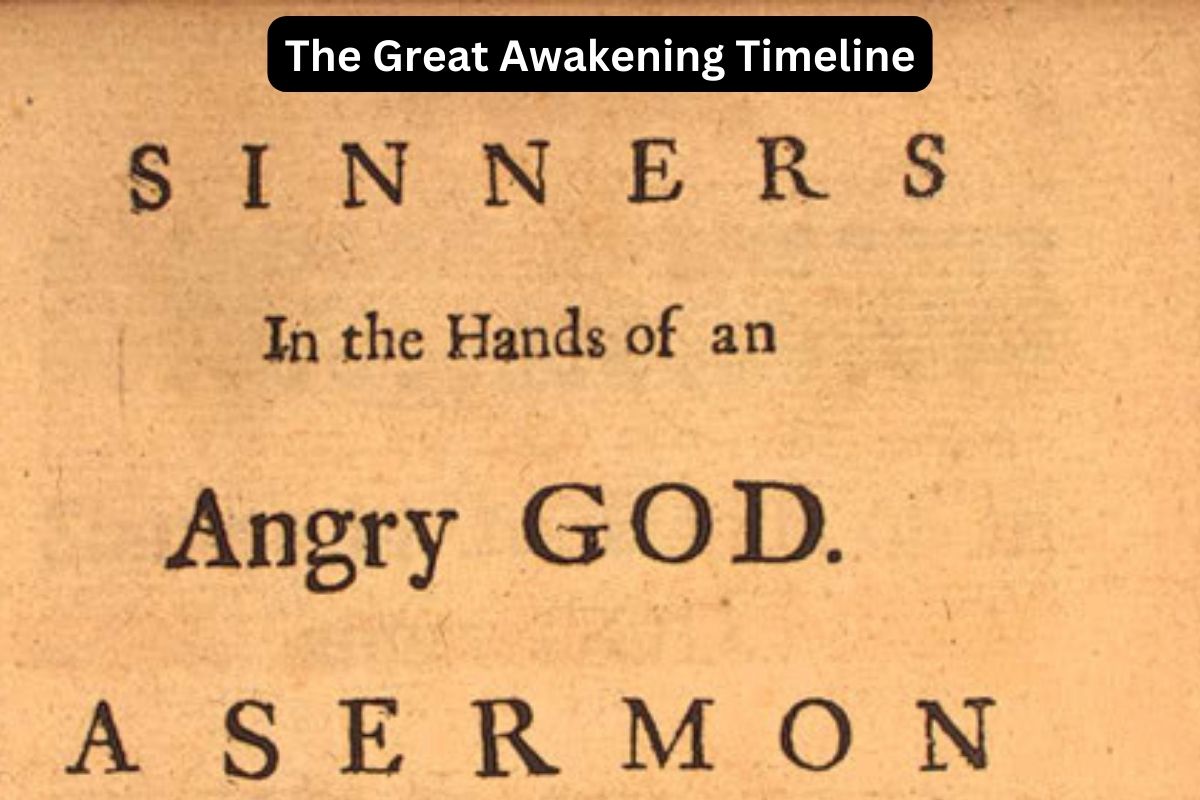The Great Awakening was a series of religious revival movements that swept across British North America in the 18th century.
It can be divided into two main waves, the First Great Awakening and the Second Great Awakening, each marked by passionate preaching, emotional religious experiences, and a profound impact on American religious and cultural life.
These revivals played a pivotal role in shaping the religious landscape of the United States and fostering a spirit of religious enthusiasm and personal piety that would leave a lasting legacy in American history.
In this discussion, we will explore the key events, figures, and significance of these two Great Awakenings.
| Time Period | Key Events and Figures |
|---|---|
| First Great Awakening (c. 1730s-1740s) | 1730s – The First Great Awakening begins 1734-1735 – Jonathan Edwards’ preaching sparks revival 1739 – Arrival of George Whitefield 1740 – Gilbert Tennent’s “The Danger of an Unconverted Ministry” 1741 – Jonathan Edwards’ “Sinners in the Hands of an Angry God” 1740s – Spread of the Great Awakening to other colonies |
| Interim Period (1740s-1760s) | 1740s-1760s – Period of relative calm and consolidation Continued influence of the First Great Awakening |
| Second Great Awakening (c. 1790s-early 1800s) | 1790s – Start of the Second Great Awakening 1801 – Cane Ridge Revival in Kentucky 1804 – “Year of the Second Great Awakening” 1820s – Growth of Methodist and Baptist denominations 1830s – Influence on new religious movements like the Mormons |
Timeline of the The Great Awakening
First Great Awakening Begins (c. 1730s):
The First Great Awakening was a significant religious revival movement that swept across the American colonies in the 18th century.
It emerged in the 1730s as a response to what many religious leaders saw as a decline in religious piety and a growing secularization of society.
Also Read: Facts About the Great Awakening
Ministers and theologians became increasingly concerned that people were losing touch with their faith and becoming more materialistic.

Jonathan Edwards’ Preaching Sparks Revival (1734-1735):
One of the pivotal moments in the First Great Awakening occurred when Jonathan Edwards, a Congregationalist minister in Northampton, Massachusetts, began delivering powerful and emotionally charged sermons in the early 1730s.
His sermons, characterized by vivid imagery and a focus on the terrifying consequences of sin, had a profound impact on his congregation and beyond.
Also Read: Second Great Awakening Facts
One of his most famous sermons, “Sinners in the Hands of an Angry God,” delivered in 1741, is still studied and remembered today for its ability to evoke intense emotional responses from listeners.
Arrival of George Whitefield (1739):
George Whitefield, an English Anglican evangelist, played a crucial role in spreading the First Great Awakening to a wider audience. In 1739, he arrived in the American colonies and quickly gained fame for his charismatic and mesmerizing preaching style.
Whitefield was known for delivering his sermons in open-air settings, drawing enormous crowds wherever he went. His ability to capture the attention of diverse audiences helped to popularize the revivalist movement and extend its reach beyond individual congregations.
Gilbert Tennent’s “The Danger of an Unconverted Ministry” (1740):
In 1740, Gilbert Tennent, a Presbyterian minister, delivered a sermon titled “The Danger of an Unconverted Ministry.” This sermon was a notable critique of what he saw as a lack of genuine religious conviction among clergy in the American colonies.
Tennent argued that many ministers were serving their congregations without a personal experience of spiritual conversion, leading to a decline in the authenticity and effectiveness of their ministry.
His sermon stirred controversy and further fueled discussions about the state of religious leadership during the Great Awakening.
Jonathan Edwards’ “Sinners in the Hands of an Angry God” (1741):
Jonathan Edwards’ sermon, “Sinners in the Hands of an Angry God,” delivered in 1741, is one of the most famous sermons of the First Great Awakening.
In this sermon, Edwards depicted a vivid and terrifying image of God’s wrath and the precarious state of sinners who were, in his words, like “spiders dangling over the pit of hell.”
Edwards’ powerful language and emotional intensity aimed to awaken his listeners to their need for salvation and to prompt them to turn to God in repentance. The sermon is still studied today for its historical significance and rhetorical power.
Spread of the Great Awakening to Other Colonies (1740s):
The Great Awakening did not remain confined to a single region or denomination. During the 1740s, the revival movement spread throughout the American colonies, including New England, the Middle Colonies, and the Southern Colonies.
It led to numerous revival meetings, “new light” churches, and an increase in religious fervor across the colonies. The movement brought people from different backgrounds together in a shared experience of religious awakening and renewal, transcending regional and denominational boundaries.

Interim Period (1740s-1760s):
After the peak of the First Great Awakening in the 1740s, there followed a period of relative calm and consolidation in the decades spanning the 1740s to the 1760s.
During this time, the initial fervor of the revival began to wane, but its impact on American religious and cultural life continued to resonate.
Continued Influence of the First Great Awakening:
While the revival meetings and intense religious experiences of the First Great Awakening may have diminished, its effects were enduring. The movement contributed to a more diverse and dynamic religious landscape in the American colonies.
It fostered the growth of various evangelical denominations and churches, including Baptists and Methodists, which would go on to become significant forces in American Christianity.
Second Great Awakening Begins (c. 1790s):
The religious enthusiasm and evangelical fervor of the First Great Awakening set the stage for a second wave of religious revivalism known as the Second Great Awakening. This second awakening began to emerge in the late 18th century, around the 1790s.
It shared some similarities with the first awakening but also had its unique characteristics, including an emphasis on individual conversion experiences and social reform.
Influence on New Religious Movements (1830s):
The Second Great Awakening, which had its roots in the aftermath of the First Great Awakening, played a role in the emergence of new religious movements in the 1830s. One notable example is the Church of Jesus Christ of Latter-day Saints, also known as the Mormons.
Joseph Smith claimed to have had a visionary experience during the Second Great Awakening, leading to the publication of the Book of Mormon and the founding of the Mormon Church in 1830. This demonstrates how the revivalist fervor of the earlier awakenings continued to shape the religious landscape of the United States.
